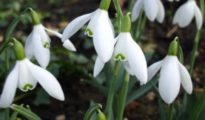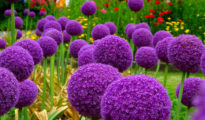Perennials are plants that grow and bloom year after year, making them a popular choice for gardeners who want to create a long-lasting and low-maintenance garden. With a little bit of planning and care, perennials can thrive for years, adding beauty and interest to your outdoor space. In this ultimate guide to planting perennials, we’ll cover everything you need to know to choose, plant, and care for these wonderful plants.

What Are Perennials?
Perennials are plants that live for more than two years, and they are known for coming back year after year. Unlike annuals that complete their life cycle in one growing season and biennials that complete their life cycle in two growing seasons, perennials are long-lived plants that can survive multiple growing seasons with proper care.
Perennials can have different life cycles, and some may be evergreen or deciduous. Some common examples of perennials include flowers such as daisies, irises, and peonies, as well as shrubs like roses and hydrangeas. Perennials can also include ornamental grasses, ferns, and even some types of vegetables like asparagus and rhubarb.
Perennials come in a wide variety of colors, shapes, and sizes, and they can be used in many different types of gardens, including cottage gardens, rock gardens, and formal gardens. These flowers are often chosen for their beauty and longevity, as well as their low-maintenance nature, making them a popular choice for gardeners of all skill levels.
What is the Difference Between Perennials, Annuals, and Biennials?
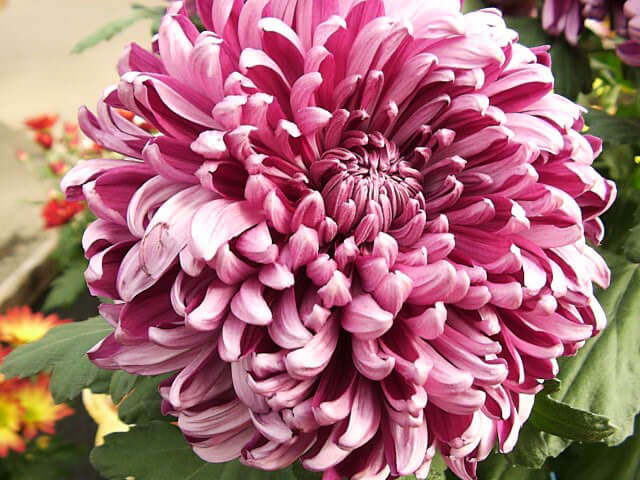
To fully understand perennials, it's essential to understand the differences between perennials, annuals, and biennials.
Annuals complete their entire life cycle in one growing season. They grow from seed, mature, produce flowers and seeds, and then die all within one year. They are typically used for seasonal color and can provide an immediate burst of color to a garden. Common examples of annuals include marigolds, zinnias, and petunias.
Biennials complete their life cycle in two growing seasons. During the first year, they grow from seed and form a rosette of leaves. During the second year, they produce flowers, set seed, and die. Examples of biennials include foxgloves, hollyhocks, and parsley.
Perennials, on the other hand, live for more than two years. They grow from seed, and once established, they will come back year after year. Perennials can be herbaceous, meaning they die back to the ground each winter, or they can be woody, such as shrubs and trees.
Perennials offer several advantages over annuals and biennials. They provide year-round interest, are more cost-effective over time, and often require less maintenance since they do not need to be replanted each year.
However, annuals and biennials have their place in the garden too. Annuals can provide a burst of color in the garden, while biennials can offer unique interest with their two-year life cycle. When planning a garden, it's essential to consider the different types of plants available and choose the ones that will best suit your needs and preferences.
The Benefits of Planting Perennials
Planting perennials in your garden can offer many benefits. Here are some of the advantages of adding perennials to your garden:
- Longevity: Perennials are known for their longevity and can provide year-round interest in your garden for many years with proper care. Once established, they require less maintenance than annuals since they do not need to be replanted each year.
- Low Maintenance: Many perennials are low-maintenance plants that require little attention once established. They are often drought-tolerant and can survive through periods of neglect or less frequent watering.
- Cost-effective: Although the initial investment in perennials may be higher than annuals or biennials, they are more cost-effective in the long run since they don't need to be replanted every year.
- Environmental benefits: Perennials are great for the environment since they help improve soil health and can provide habitat for pollinators and other beneficial insects. They also require less water and fertilizers than annuals, making them a more eco-friendly choice.
- Versatility: Perennials come in a wide variety of colors, shapes, and sizes, and they can be used in many different types of gardens, including cottage gardens, rock gardens, and formal gardens. They can also be used as groundcovers, border plants, or focal points in the garden.
- Seasonal interest: Perennials offer seasonal interest, with different plants blooming at different times throughout the growing season. This can provide continuous color and interest in the garden, even when other plants are not in bloom.
- Plant propagation: Many perennials can be propagated by division, allowing you to multiply your plants for free. This can be a great way to expand your garden or share your plants with friends and family.
Overall, planting perennials in your garden can offer many benefits, including longevity, low maintenance, cost-effectiveness, environmental benefits, versatility, seasonal interest, and plant propagation. Whether you're a seasoned gardener or just starting out, adding perennials to your garden is a great way to create a beautiful and sustainable outdoor space.
Choosing the Right Perennials
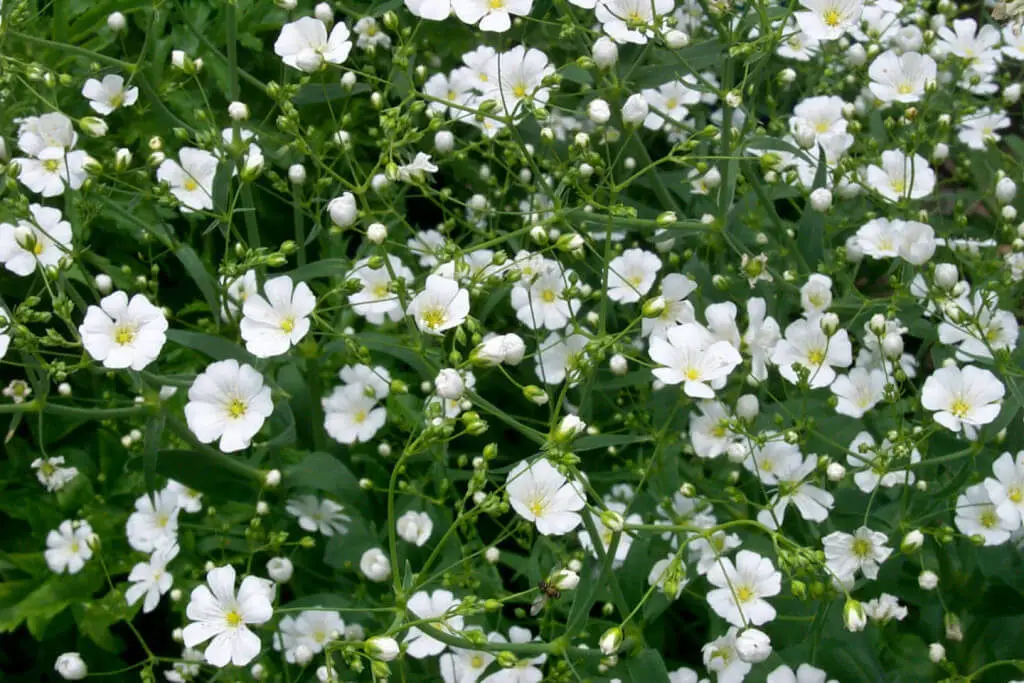
So how do you choose the right perennials for your garden? There are so many different varieties to choose from, it can be hard to make the right decision. From light and soil requirements to color and bloom time, we’ll help you select the best plants for your specific needs.
Perennial Light Requirements
One of the essential factors to consider when planting perennials is their light requirements. The amount of sunlight that a plant receives can have a significant impact on its growth and development, as well as its ability to bloom and produce flowers. Here are some general guidelines for the light requirements of perennials:
- Full sun: Full sun perennials require at least six hours of direct sunlight per day. These plants thrive in hot, dry conditions and are often drought-tolerant. Examples of full sun perennials include lavender, coneflower, and daylilies.
- Partial shade: Partial shade perennials prefer four to six hours of sunlight per day, with some protection from the hot afternoon sun. These plants are often grown for their foliage, and many produce beautiful blooms as well. Examples of partial shade perennials include hostas, ferns, and bleeding heart.
- Full shade: Full shade perennials require less than four hours of direct sunlight per day. These plants prefer cooler, moister conditions and are often grown for their foliage rather than their flowers. Examples of full shade perennials include astilbe, lungwort, and coral bells.
Perennial Soil Requirements
The soil in which perennials are planted plays a critical role in their growth and development. The right soil conditions can promote healthy root development, improve nutrient uptake, and increase resistance to pests and diseases. Here are some general guidelines for the soil requirements of perennials:
- Soil type: Perennials can grow in a range of soil types, including sandy, loamy, and clay soils. However, it's important to choose plants that are adapted to your soil type. For example, plants that prefer well-drained soil, such as lavender and coneflower, may struggle in heavy clay soils, while plants that prefer moist soil, such as astilbe and hosta, may struggle in sandy soils.
- pH level: The pH level of the soil can also affect plant growth and development. Most perennials prefer slightly acidic soil with a pH range of 6.0 to 7.0. However, some plants, such as blueberries and rhododendrons, prefer more acidic soil with a pH range of 4.5 to 5.5.
- Organic matter: Adding organic matter to the soil can improve soil structure, increase water-holding capacity, and provide essential nutrients to plants. Adding compost, leaf mold, or well-rotted manure to the soil before planting can improve soil fertility and promote healthy plant growth.
- Drainage: Good drainage is essential for the health of perennials. If the soil is poorly drained, it can lead to root rot and other soil-borne diseases. Adding organic matter to heavy clay soils can improve drainage, while adding sand or gravel to sandy soils can improve water retention.
- Nutrients: Perennials require a range of essential nutrients, including nitrogen, phosphorus, and potassium. Fertilizing perennials with a balanced fertilizer can help ensure that they have the nutrients they need to thrive. However, it's important not to over-fertilize, as this can lead to excessive growth and poor flowering.
When planting perennials, it's important to prepare the soil properly to provide the best growing conditions for the plants. Testing the soil for pH levels and nutrient content can help you determine if any amendments are needed. Adding organic matter, such as compost or leaf mold, can improve soil structure and fertility, while also promoting healthy root growth. By providing the right soil conditions, you can help ensure that your perennials grow and thrive in your garden for many years to come.
Choosing Colors and Bloom Times
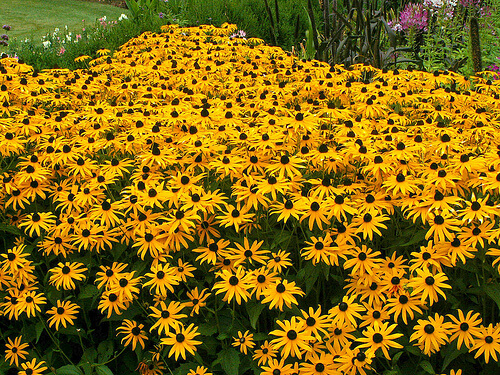
When it comes to choosing perennials for your garden, the color and bloom time of the flowers are important factors to consider. The color of the flowers can have a significant impact on the overall look and feel of your garden, while the bloom time can help ensure that you have a continuous display of color throughout the growing season. Here are some tips for choosing colors and bloom times for perennials:
- Consider your color scheme: Before selecting perennials, consider the overall color scheme of your garden. Do you want a garden with warm colors, cool colors, or a mix of both? Do you want to create a specific mood or atmosphere, such as a tranquil or vibrant garden? Once you have a clear idea of your color scheme, you can choose perennials that complement or contrast with the existing colors in your garden.
- Choose perennials with different bloom times: To ensure a continuous display of color throughout the growing season, choose perennials with different bloom times. Early spring-blooming perennials, such as hellebores and crocuses, can help kick-start your garden, while summer-blooming perennials, such as coneflowers and phlox, can provide a burst of color in the heat of summer. Fall-blooming perennials, such as asters and sedums, can provide color well into the autumn months.
- Mix and match colors and textures: To create a visually interesting garden, mix and match perennials with different colors and textures. Combine plants with bold, bright colors with plants that have softer, more subtle hues. Mix tall and short plants to create dimension and depth in your garden. Consider using foliage plants, such as ferns and hostas, to provide texture and interest even when the flowers aren't in bloom.
- Consider the foliage color: While the flowers of perennials are often the main attraction, the foliage can also play an important role in the overall look and feel of your garden. Consider the color and texture of the foliage when choosing perennials. For example, plants with variegated foliage, such as variegated hostas or heucheras, can add interest and color to your garden even when the flowers aren't in bloom.
Preparing Your Garden
Before you plant your perennials, it’s important to prepare your garden beds. In this chapter, we’ll discuss the steps you should take to ensure your soil is ready for planting, and how to create the ideal growing environment for your perennials.
Testing Your Soil
Testing your soil is an important step in determining the health and fertility of your garden. A soil test can help you determine the pH level, nutrient content, and texture of your soil, which can help you select the right plants and fertilizers for your garden. Here are the steps to test your soil:
- Gather your materials: You will need a soil testing kit, which can be purchased at a garden center or online. Some kits may require you to collect soil samples and send them to a lab for analysis, while others allow you to test your soil on-site. Be sure to follow the instructions provided with your testing kit.
- Choose a testing location: Select a location in your garden where you want to test the soil. Avoid areas where fertilizers, pesticides, or herbicides have been recently applied, as these can affect the test results. Use a garden trowel to dig a small hole in the soil.
- Collect a soil sample: Use a garden trowel or spade to collect a soil sample from the hole. The sample should be a composite of several small samples taken from different areas within the testing location. Take samples from a depth of 6-8 inches, which is the depth of most plant roots.
- Test the soil: Follow the instructions provided with your testing kit to test the soil. Most testing kits will measure the pH level, nutrient content, and texture of the soil. The pH level is a measure of how acidic or alkaline the soil is, which can affect the availability of nutrients to plants. The nutrient content of the soil, including nitrogen, phosphorus, and potassium, can affect plant growth and health. The texture of the soil, including the amount of sand, silt, and clay, can affect drainage and water retention.
- Interpret the results: Once you have tested your soil, interpret the results provided by your testing kit. The results will indicate the pH level, nutrient content, and texture of your soil. Use this information to select plants that are well-suited to your soil's pH and nutrient levels. If your soil is deficient in certain nutrients, you may need to add fertilizers or organic matter to improve its fertility.
Preparing the Soil
Preparing your soil is another very important step in creating a healthy and vibrant garden, and it is especially important when planting perennials. By following these steps, you can ensure that your soil is properly prepared for planting perennials and will provide the best possible growing conditions for your plants:
- Clear the area: Before you begin preparing the soil, remove any weeds, rocks, or debris from the area where you plan to plant your perennials. Use a garden fork or hoe to loosen the soil and remove any large rocks or roots.
- Test the soil: As mentioned earlier, it's important to test your soil to determine its pH level, nutrient content, and texture. Use a soil testing kit to obtain this information, and use the results to adjust your soil as needed. If your soil is too acidic, you can add lime to raise the pH level. If it is too alkaline, you can add sulfur to lower the pH level. If your soil is deficient in nutrients, you can add compost or organic fertilizers to improve its fertility.
- Add organic matter: To improve the texture and fertility of your soil, add organic matter such as compost, aged manure, or leaf mold. Organic matter can improve soil structure, increase water retention, and provide essential nutrients to your plants. Spread a 2-3 inch layer of organic matter over the soil and use a garden fork or tiller to work it into the top 6-8 inches of soil.
- Improve drainage: If your soil is heavy or clayey, it may not drain well and can lead to waterlogged conditions that can harm your plants. To improve drainage, add sand or perlite to the soil to increase its porosity. Alternatively, you can create raised beds or mounds to improve drainage.
- Level the soil: Once you have added organic matter and improved drainage, use a garden rake to level the soil and create a smooth surface for planting. Avoid compacting the soil by walking on it or using heavy machinery.
Adding Organic Matter
It's important to choose the right organic matter when it comes to planting perennials. There are many types of organic matter that can be used to amend soil, including compost, aged manure, leaf mold, and shredded bark. Choose an organic matter that is appropriate for your soil type and the needs of your plants. For example, if your soil is sandy and prone to drying out, choose an organic matter that can improve water retention.
Add organic matter to the planting hole: When planting your perennials, dig a hole that is twice as wide and deep as the plant's root ball. Mix a generous amount of organic matter into the soil that will be used to backfill the hole. Aim to add about 1-2 inches of organic matter to the soil.
Mix the soil and organic matter: Use a garden fork or shovel to mix the organic matter into the soil thoroughly. Ensure that the soil and organic matter are blended evenly throughout the planting hole. Avoid creating a layer of organic matter at the bottom of the planting hole, which can lead to waterlogged conditions.
Plant the perennial: Once you have prepared the planting hole with organic matter, it's time to plant your perennial. Gently place the plant into the hole and backfill with the amended soil. Tamp down the soil around the base of the plant to remove air pockets.
Add a top dressing: After planting your perennial, add a layer of organic matter on top of the soil. This will help retain moisture and provide additional nutrients to the plant as it grows. Aim to add about 1-2 inches of organic matter on top of the soil around the base of the plant.
Planting Perennials
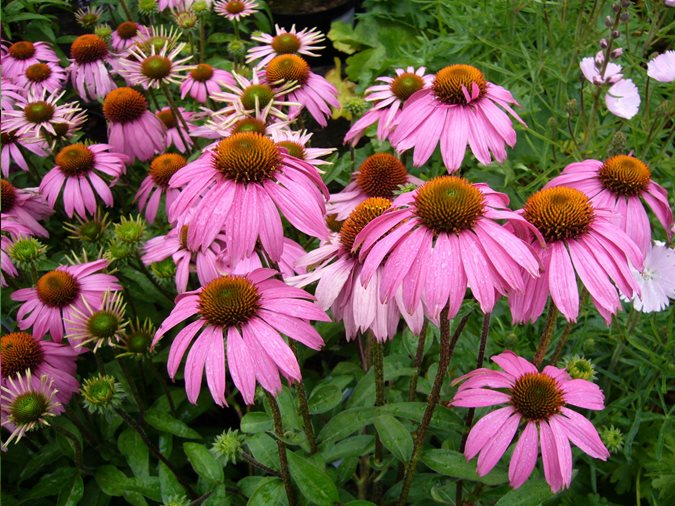
Now it’s time to plant your perennials! In this chapter, we’ll walk you through the steps of planting perennials, including how to space them properly, how to water them, and how to provide them with the nutrients they need to thrive.
Choosing the Right Planting Location
Choosing the right planting location for perennials is critical to their success in the garden. Consider factors such as the amount of sunlight the area receives, the soil type and quality, and the availability of water. Some perennials thrive in full sun, while others prefer partial shade. Make sure to choose a planting location that provides the appropriate amount of light for your specific perennial. Additionally, consider the soil type and quality of the planting location, as well as the drainage conditions.
Some perennials prefer well-drained soil, while others can tolerate heavier, clay-like soil. It's also important to choose a location with access to water, whether through natural rainfall or irrigation, as perennials require consistent moisture to thrive. Finally, consider the surrounding landscape, as tall perennials can provide privacy and shade, while shorter perennials can create beautiful borders and ground cover. By considering these factors, you can choose the best possible planting location for your perennials, ensuring their health and vibrancy for years to come.
Spacing Perennials
Spacing perennials properly is important to ensure their growth and development, as well as to create an attractive and balanced garden design. The spacing requirements for perennials can vary depending on their mature size, growth habit, and the overall garden design. As a general rule, perennials should be spaced at a distance equal to half of their mature width. For example, if a perennial is expected to grow to a width of 24 inches, it should be planted with a spacing of 12 inches between plants.
This will allow enough room for the plants to grow and spread, without becoming overcrowded or competing for resources. Additionally, consider the overall design of your garden, and ensure that your plant spacing creates a cohesive and balanced look. If planting in groups, consider varying the spacing between plants to create a more natural and organic look. By spacing your perennials properly, you can create a beautiful and healthy garden that will thrive for years to come.
Watering Perennials
Watering perennials is an essential aspect of their care, as consistent moisture is necessary for their growth and development. The frequency and amount of watering required for perennials can vary depending on their species, soil type, and climate. In general, it's important to water perennials deeply and thoroughly, allowing the soil to become moist to a depth of at least 6 inches. Avoid watering the leaves, as this can increase the risk of fungal diseases.
Additionally, consider the time of day when watering, as early morning or late afternoon is the best time to water, as this allows the plants to absorb water before the heat of the day. It's also important to avoid overwatering, as this can lead to root rot and other issues. To determine when to water, monitor the soil moisture levels regularly, and water when the soil begins to dry out. By providing consistent and appropriate moisture, you can ensure the health and vitality of your perennial plants.
Caring for Perennials
Once your perennials are planted, it’s important to care for them properly to ensure they continue to thrive. In this chapter, we’ll discuss how to care for your perennials throughout the growing season, including pruning, deadheading, and dividing.\
Caring for perennials is essential to keep them healthy, beautiful, and long-lasting in your garden. Some key aspects of perennial care include regular watering, fertilization, and pruning. As mentioned previously, watering perennials deeply and regularly is important for their health and development. Fertilization is also necessary to provide the plants with the necessary nutrients they need to thrive.
Consider using a slow-release fertilizer or adding compost to the soil around the base of the plant. Pruning is another critical aspect of perennial care, as it helps to shape the plant and remove any dead or diseased growth. Pruning should be done in the appropriate season and using the appropriate technique for the specific plant. Additionally, it's important to monitor your perennials for any signs of pests or disease and take appropriate measures to prevent or treat any issues. By providing consistent care to your perennials, you can ensure their longevity and beauty in your garden.
Pruning Perennials
Pruning perennials is an essential aspect of their care, as it helps to shape the plant, remove dead or diseased growth, and promote healthy growth. The timing and technique for pruning perennials can vary depending on the specific plant species, but there are some general guidelines to follow. In general, it's best to prune perennials in late winter or early spring before new growth appears. This allows the plant to focus its energy on new growth, rather than repairing damage from pruning.
When pruning, make sure to use sharp, clean pruning shears to avoid damaging the plant. Cut back any dead or diseased growth, as well as any crossing branches or stems that may be inhibiting growth. Additionally, consider the growth habit of the plant, and prune accordingly to promote a balanced and attractive shape. Some perennials, such as those that bloom on new growth, may benefit from a more severe pruning to promote new growth and maximize blooms. By pruning your perennials properly, you can promote healthy growth and ensure their longevity in your garden.
Deadheading Perennials
Deadheading perennials is an essential aspect of their care, as it helps to promote continuous blooms and prevent the plant from wasting energy on seed production. It involves removing spent flowers from the plant, which redirects the plant's energy towards producing new growth and blooms. The timing and technique for deadheading perennials can vary depending on the specific plant species, but there are some general guidelines to follow.
In general, it's best to deadhead perennials as soon as the flowers begin to fade or wilt. Use clean, sharp pruning shears or your fingers to snip or pinch off the spent flowers at the base of the stem. Some perennials, such as those with multiple flowering stems, may benefit from a more severe deadheading, which involves cutting back the entire stem after flowering. Deadheading perennials regularly throughout the growing season can help to promote continuous blooms and keep your garden looking its best.
Dividing Perennials
Dividing perennials is an essential aspect of their care, as it helps to promote healthy growth, prevent overcrowding, and rejuvenate older plants. The timing and technique for dividing perennials can vary depending on the specific plant species, but there are some general guidelines to follow. In general, it's best to divide perennials in the spring or fall when the weather is mild and the plant is not actively growing or blooming.
Start by digging up the entire plant, being careful not to damage the roots. Then, use a sharp, clean garden knife or shovel to divide the plant into smaller sections. Each section should have a healthy root system and several stems or shoots. Replant each section in a new location, making sure to space them appropriately and provide adequate water and nutrients. Dividing perennials every few years can help to prevent overcrowding and promote healthy growth and flowering. It can also be a great way to propagate your favorite plants and share them with friends and family.
Perennial Winter Care
Perennial winter care is essential to help your plants survive the cold temperatures and harsh conditions of the winter months. Some key aspects of winter care include protecting the roots, mulching, and pruning. In general, it's best to leave the foliage and stems of perennials intact through the winter, as they can provide insulation and protection to the roots. However, some plants may benefit from a light pruning or cutting back to reduce the risk of damage from snow or ice buildup.
It's also important to protect the roots of perennials from freezing temperatures, which can cause damage or death to the plant. Consider adding a layer of mulch or straw around the base of the plant to provide insulation and retain moisture. Additionally, be mindful of any pest or disease issues that may arise during the winter months and take appropriate measures to prevent or treat any issues. By providing proper winter care to your perennials, you can help ensure their survival and health for years to come.
Troubleshooting Common Perennial Problems
Even with proper care, perennials can sometimes encounter issues such as pests or diseases. In this chapter, we’ll discuss some common problems you may encounter with your perennials, and how to diagnose and treat them.
Perennial Pests & Diseases
Perennial plants can be susceptible to a range of pests and diseases that can impact their health and growth. Some common pests that can affect perennials include aphids, spider mites, thrips, and caterpillars, while common diseases include powdery mildew, rust, and root rot. It's important to monitor your plants regularly for signs of pests or diseases and take appropriate measures to prevent or treat any issues.
One of the best ways to prevent pests and diseases is to maintain healthy growing conditions, including proper watering, fertilization, and soil preparation. Additionally, it's important to practice good garden hygiene by removing any dead or diseased plant material promptly and cleaning your gardening tools regularly.
For pest control, consider using natural predators, such as ladybugs or lacewings, or using organic sprays or insecticidal soaps. For disease control, consider using fungicides or removing infected plant material. By being vigilant and proactive in preventing and treating pests and diseases, you can help ensure the health and vitality of your perennial plants.
From understanding the benefits of perennials to selecting the right plants for your garden, planting and caring for perennials can be a rewarding and enjoyable experience for any gardener.
Whether you’re a seasoned gardener or just starting out, perennials are an excellent choice for adding beauty and interest to your outdoor space. With their longevity and low-maintenance nature, perennials can be a great investment for any garden.
Understanding the different types of perennials, choosing the right plants for your specific needs, preparing your garden beds, planting and caring for your perennials properly, troubleshooting common issues, and designing with perennials can all be challenging tasks. However, by following the advice and tips outlined in this guide, you can make your journey into perennial gardening easier and more successful.
Remember to test your soil and amend it with organic matter to create the best growing environment for your perennials. Choose plants that are suitable for your hardiness zone, have the right light and soil requirements, and complement each other in color and bloom time. Properly space your plants, water them regularly, and provide them with the nutrients they need to thrive.
Caring for your perennials throughout the growing season is also essential for their success. Regular pruning, deadheading, and dividing will ensure healthy and vigorous plants. Proper winter care will also help protect your perennials from the cold and prepare them for the next growing season.
If you encounter any problems with your perennials, such as pests or diseases, diagnose and treat them promptly to avoid any further damage. And when designing with perennials, consider creating a focal point, using companion plants, and choosing a color scheme that complements your garden.
In conclusion, planting perennials can be a wonderful and rewarding experience for any gardener. By following the advice and tips outlined in this ultimate guide to planting perennials, you can create a beautiful and low-maintenance garden that will provide years of enjoyment.


